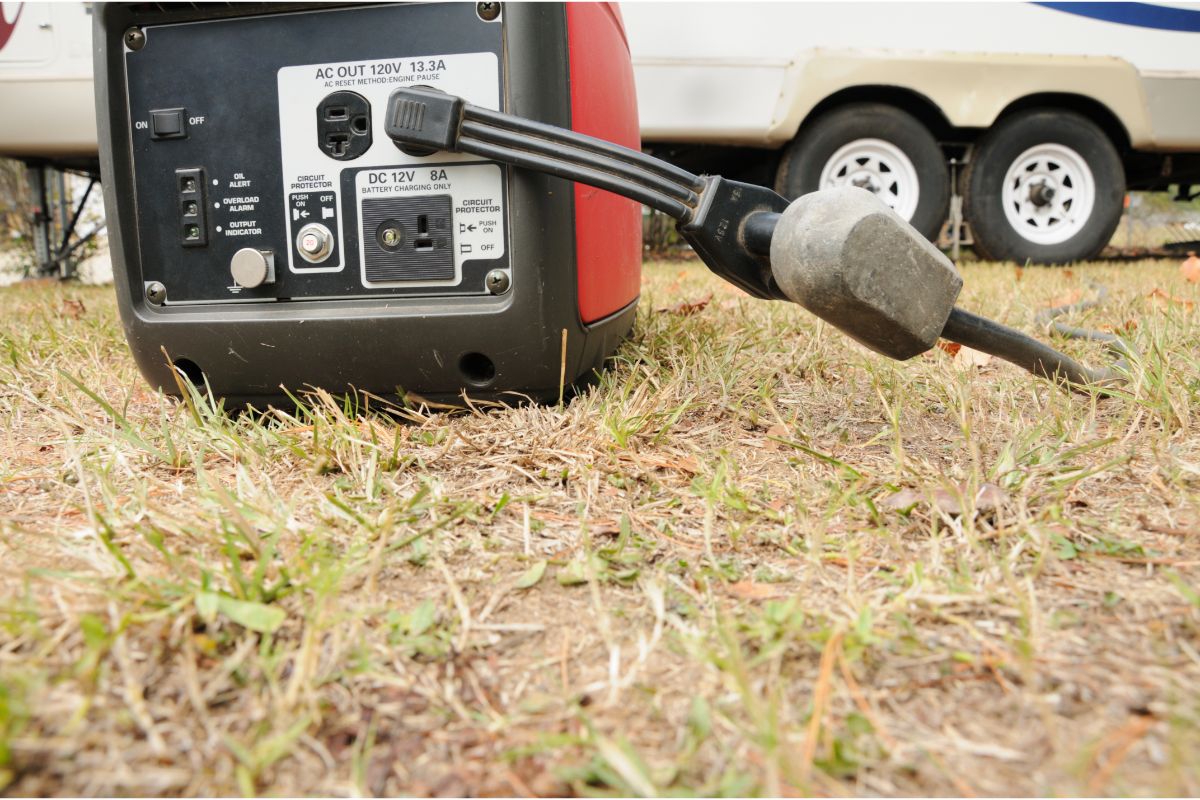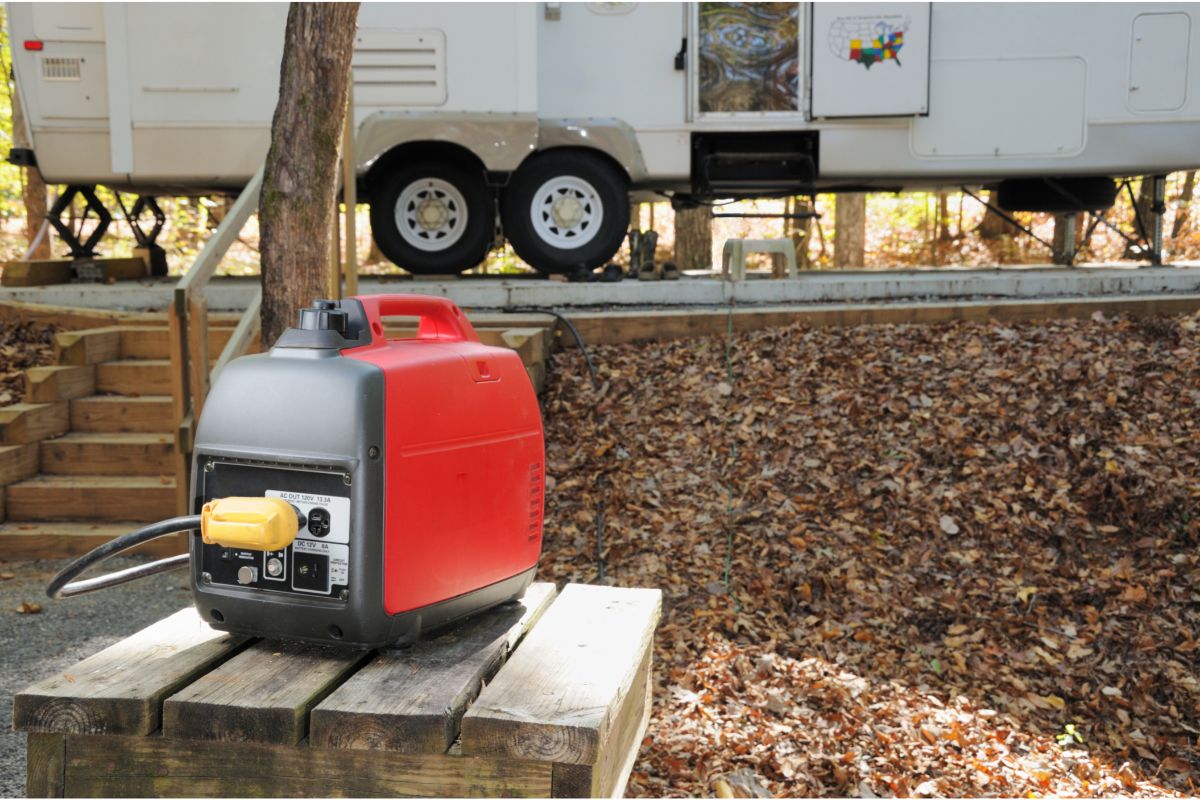Discover How To Use The Power of Authority Marketing To Make You Money While You Adventure!
No Experience, Existing Product Or Technical Skills Are Required
DO YOU BELIEVE ADVENTURES ARE WORTH CHASING?
We're an affiliate.
We hope you love the products/services we recommend on Just Van Life! So you know, there is the possibility we will collect a commission should you make a purchase via any of our links. This will in no way affect the purchase price. Thank you for your support, we really appreciate it!
If you’re thinking about spending the week camping in the great outdoors, it’s important to make sure that you’re aware of whether or not you’re going to have access to an electrical grid so that you will be able to keep your devices and other essentials charged up.
At some camping locations, you might be able to gain access to electricity without the need for a generator, but if you don’t – you’re going to need to make sure that you use a portable generator to ensure that you can stay connected for the duration of your camping trip.

However, it is important to ground it before making sure that you stay safe. The only question is, how do you ground your generator correctly when camping?
This is where we come in to lend you a helping hand. In this article, we’re going to be showing you how to ground your generator correctly in just a few simple steps! Read on.
Why Should You Ground a Generator?
Before we get any further into this article, we first think that it would be a good idea to briefly talk you through why it’s so important to make sure that you ground your generator prior to using it while camping. As we have briefly touched upon above, making sure that you ground your generator is extremely important, otherwise you might be putting yourself at risk of a variety of safety issues.
For example, without taking the time to ground your generator prior to using the generator, not only will it raise the chances of potential electrocution, but along with this, you might even run the risk of your connected appliances becoming short-circuited due to overheating.
By making sure that you ground a generator before using it, you will be able to have the peace of mind that you are going to be able to safely use it. The good news? Generators are typically pretty easy to ground – which brings us to our next point.

How to Ground a Generator
Now that you have a better understanding of why it is so important to make sure that you are grounding your generator – we are now going to be providing you with simple instructions on how to do it. Let’s take a look below:
1.Gather your Supplies
First things first, you are going to need to make sure that you have all of the supplies that you are going to need to effectively ground your generator in the ground.
To ground your generator, you will need a copper steel rod, a copper wire, a wrench and a mallet. Usually, these items will be included in the box.
2. Find a Soft Area in the Ground
Once you have made sure that you have all the items that you are going to need to be able to correctly ground your generator, you are then going to need to find a soft spot in the ground near where you are camping.
For the best conductivity, we recommend that you choose a spot in the ground that does not contain any rocks, and is not too wet or too dry. Ideally, you should select a soft area of ground that is only a little bit damp for the best results.
3. Insert the Grounding Rod
After you have selected the best spot for grounding your generator, you are then going to be ready to begin grounding it! To do this, start by taking your mallet and grounding rot, and insert it into the ground. Once you have done this, all you are then going to need to do is gently tap the rod around three fit into the ground.
Once you have done this, we recommend that you carefully wiggle the rod to ensure that it is secure in the ground. If it is moving too much, you might need to re-insert it.
4. Attach the Copper Wire to the Rod
After you have inserted the grounding rod into the ground, you will then need to take your copper wire and carefully attach it to the grounding rod that you have just placed inside the ground. To secure it to the grounding pole, take the wrench you have and tighten it using a fastening nut.
5. Connect the Wire to the Grinding Terminal
Once you have connected the wire to the grounding rod of the generator, you are then going to need to connect the other end of the wire to the generator’s terminal. By doing so, you will be able to begin safely and effectively using your generator!
Usually, the grounding terminal is located on the back of the generator’s construction, and will usually have a grounding symbol so that it can’t be confused with other ports.
6. Begin Using the Generator
After you have done this, all you will have to do is check that all the wires are connected, and then begin using the grounded generator!
As a side note, please keep in mind that the instructions we have shared with you above should only be taken as general guidelines on how to ground a standard generator.
If you are struggling to ground a generator, we recommend that you either reach out to your manufacturer’s customer service team for further assistance or take a look at the owner’s manual for specific instructions relevant to your specific model of generator.
The Bottom Line
Even though taking the time to ground your generator every time that you go camping can be a little bit of a nuisance, it’s important to make sure that you do so in order to ensure that you stay safe.
By following the steps that we have shared with you above, you will be able to ensure your generator is correctly grounded prior to using it, while also helping to prevent the risk of electrocution, or damage to the appliances that you will be charging.
Thank you for reading!
Discover How To Use The Power of Authority Marketing To Make You Money While You Adventure!
No Experience, Existing Product Or Technical Skills Are Required
DO YOU BELIEVE ADVENTURES ARE WORTH CHASING?
